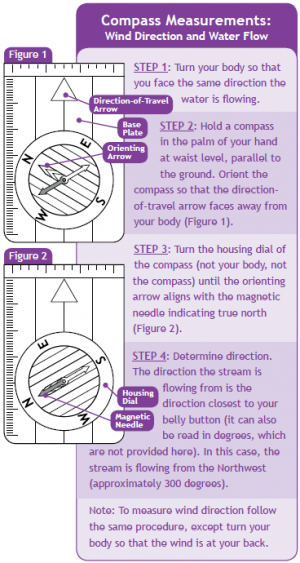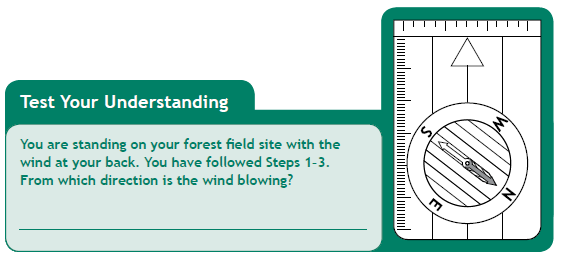 Physical factors such as sunlight, wind, and water influence the suitability of an area for plant and animal life. By comparing different environments, we can begin to understand how nonliving elements can influence living elements within an ecosystem.
Physical factors such as sunlight, wind, and water influence the suitability of an area for plant and animal life. By comparing different environments, we can begin to understand how nonliving elements can influence living elements within an ecosystem.
Select two outdoor study sites. You might choose a forested area, local park, or even your own backyard. Use a data collection sheet (such as the one provided by PLT at https://bit.ly/2E6ZThQ) to track and compare data points for levels of Sunlight, Wind, and Slope at each of your chosen locations.
For Sunlight, use relative terms such as shady, dark, medium light, or bright.
For Wind, use a compass to determine the direction from which the wind is blowing (see Compass Measurements inset at right).
For Slope, slowly pour water onto the ground and observe where it goes. Then use a compass to determine the direction of water flow (see Compass Measurements). Later look at a map of the area to identify the body of water that will eventually be reached by the water you poured.
Explore and Review
- Which study site had the greatest number of plants? Animals?How might you explain this difference?
- How might wind and water flow affect plants?
- Which site did you prefer? Why?
Download the Activity
Descarga la actividad en español: Campo, bosque y corriente
Get the Full Activity
This family activity is adapted from Project Learning Tree’s PreK-8 Environmental Education Activity Guide which can be obtained through an in-person professional development workshop or online course.
All PLT activities are copyright protected. Please remember to reproduce responsibly.
Click here for our Content Reprint and Adaptation Policy.



